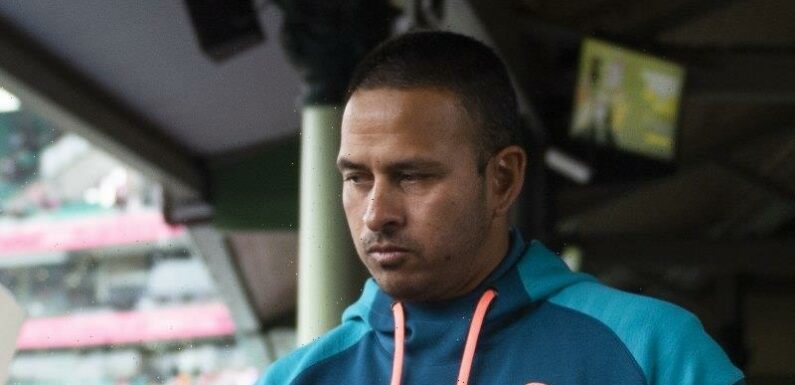
Every Australian should feel deeply unsettled by Test cricketer Usman Khawaja’s observations about his experiences in this country as an aspiring player and, later, as a champion wearing the baggy green in international competitions.
In team selections, locker-room banter, crowd heckling, even getting past the security guards at the ground, Khawaja has endured racism, or has perceived subconscious bias.
Usman Khawaja signs autographs for cricket fans at the Sydney Test this month.Credit:Rhett Wyman
Racist taunts and cultural witlessness by others so permeated his childhood experiences that Khawaja, born in Pakistan and raised in Australia from the age of four, readily admits he did not follow the Australian cricket team for many years.
As he told Age journalist Osman Faruqi, what Khawaja saw were “these really brash, really stubborn, beer-drinking white Australians that were the same kind of guys racially vilifying me while I was playing cricket”. There were no role models, no one with whom to identify.
And Khawaja was not alone in feeling alienated from that overwhelmingly white, blokey, macho ethos. Faruqi conceded he felt the same. Many women feel it, too. Viscerally.
Over generations, and through various iterations, Cricket Australia has been indefensibly slow in quashing racism, curbing its dominant white-man culture, and implementing practical and inclusive initiatives.
In late 2021, Cricket Australia vowed to ensure the sport here was more inclusive, particularly to include players of South Asian heritage. Chief executive Nick Hockley said at the time that the organisation and the sport had a long way to go if it was to genuinely reflect the cultural diversity of Australia’s community.
Cricket Australia’s actions were, in part, precipitated by the shocking revelations presented to the British parliament by English cricketer Azeem Rafiq, who detailed the vile racist and religious denigration he experienced over many years.
Rafiq’s words ring like a bell: “You had people who were openly racist, and you had the bystanders. No one felt it was important.”
Cricket Australia’s long-term complacency is at last changing, albeit slowly, and that is evidenced by its 2021 commitment and by the refreshingly modern ethos pursued by Australian Test captain Patrick Cummins.
There are some promising up-and-comers in the NSW and Victorian state teams whose cultural heritage stem from the subcontinent, as cricket writer Andrew Wu reported in November. And there are countless highly promising little 10-year-old cricketers bashing balls into suburban nets who, a decade from now, might make the state or national teams.
About 3 per cent of Australians now boast a cultural heritage stemming from the subcontinent, from the great cricket-playing nations of India, Pakistan, Bangladesh, and Sri Lanka. To be clear, though, pursuing diversity is not a matter of checking population statistics and ticking the boxes. It is about embedding cultural change at every level.
So far, Cricket Australia’s diversity initiatives appear to have proceeded at glacial pace compared with a lot of other sporting institutions here and overseas. But real diversity springs from systemic change and systemic acceptance.
This key national institution must change its culture from deep within and insist on that change in every interaction with the outside world: in its marketing, its dealings with stadiums and third-party suppliers, and with every message it sends its supporters.
Most Viewed in National
From our partners
Source: Read Full Article
